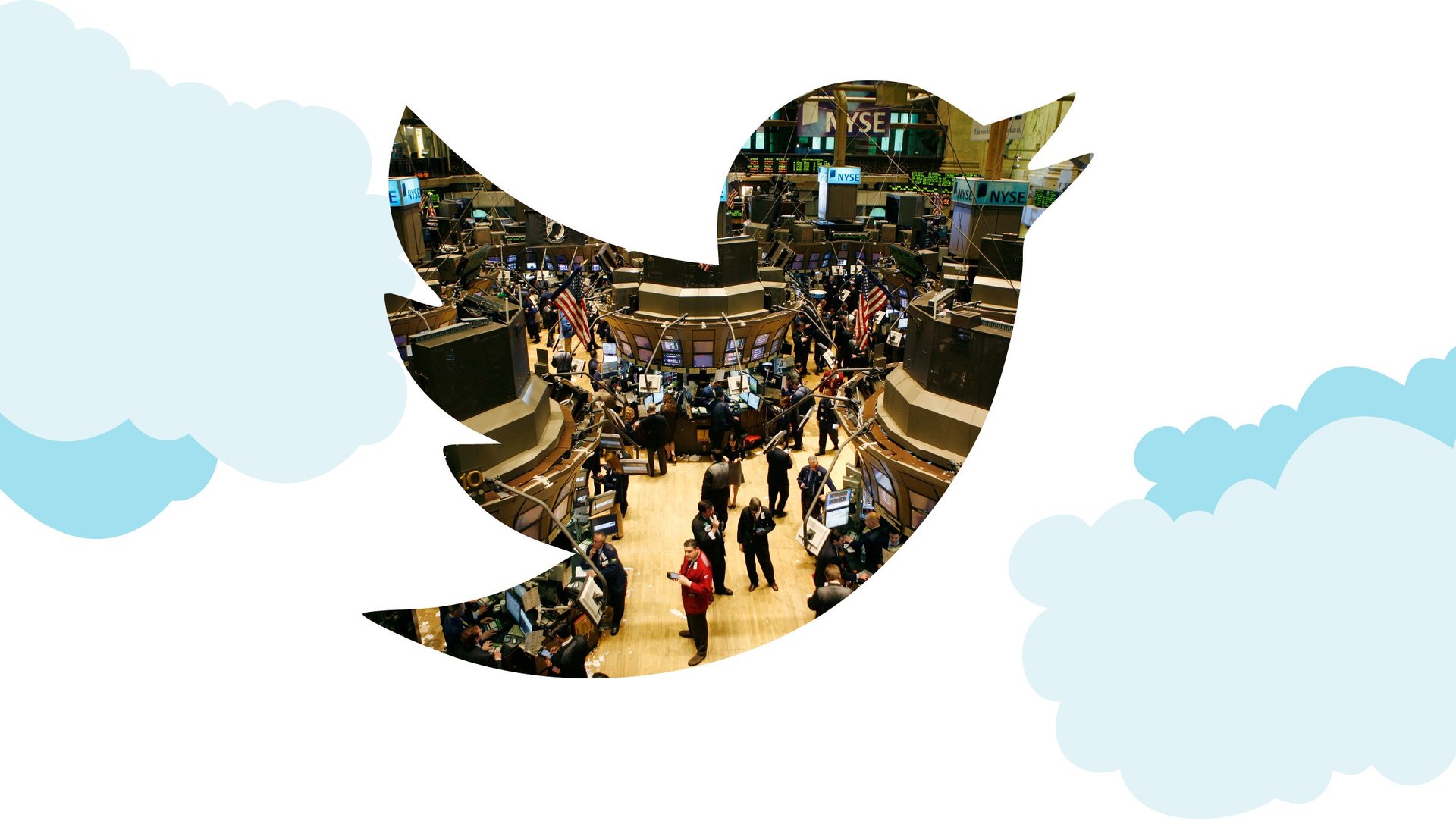Twitter files for an IPO: Here are all the important details
Twitter, which launched in 2006 as a simple text-messaging service that was frequently dismissed as frivolous, then grew into a viable business with 2,000 employees and hundreds of millions of users, just filed paperwork to become a public company.


Twitter, which launched in 2006 as a simple text-messaging service that was frequently dismissed as frivolous, then grew into a viable business with 2,000 employees and hundreds of millions of users, just filed paperwork to become a public company.
We’re poring through the document now. Here’s a guide to navigating the filing. We’ll keep updating this piece with new details, and you can leave annotations by hovering over any paragraph and clicking the bubble that appears to the right.
Twitter’s path to an IPO should move quickly from here. The company has to wait three weeks before it can start pitching itself to investors in a “road show,” which will be shorter than is customary, according to someone familiar with Twitter’s plans. Then it will proceed toward a first day of trading as soon as possible, the source said. Here are details from the filing:
• Twitter intends to list its shares under the symbol “TWTR.”
• Twitter lost $79.4 million last year on revenue of $317 million. The company lost money in each of the past three years.
• Last year, Twitter generated 15% of its revenue from licensing its data and the rest from advertising. That’s a reversal from 2010, when most of its revenue came from data.
• Twitter has 218 million monthly active users; 49 million of them are in the United States.
• In the last six months, 25% of Twitter’s revenue came from outside the United States
• Twitter may have an advantage—compared to traditionally desktop-oriented social media outlets like Facebook—when it comes to mobile usage. “Over 65% of our advertising revenue was generated from mobile devices,” the company’s documents reported. Seventy percent of Twitter’s active users accessed it from a mobile device in the second quarter of 2013.
• Twitter also faces quite conventional media company challenges, including falling advertising rates. In its filing, the firm noted that one of its advertising rate metrics, known as average cost per ad engagement, decreased for five consecutive quarters, ending with a 46% decline in the second quarter of 2013. “The decreases in cost per ad engagement over these periods were primarily due to an increase in supply of advertising inventory available in our auctions,” the company said.
• Twitter said it would raise $1 billion in the IPO, though that figure often changes as a company approaches its first day of trading.
• The documents listed Twitter co-founder Evan Williams as having the largest individual stake in the firm with more than 56.9 million shares. The second largest shareholder, with 31.6 million shares, is Peter Fenton, a Twitter board member and general partner at venture capital firm Benchmark. Twitter co-founder Jack Dorsey, Twitter’s chairman and the current CEO of payment start-up Square, is listed as having 23.4 million shares, the third largest amount. Twitter CEO Dick Costolo is listed with a stake of 7.6 million shares.
• CEO Dick Costolo’s annual salary was $200,000 in 2012, but was reduced to $14,000 in August, likely reflecting the approach of the IPO. Costolo was awarded $8.4 million in stock in 2012 and $2.9 million in stock options, making his total 2012 compensation $11.5 million.
• Goldman Sachs is the lead underwriter on the high-profile deal, capturing the much sought after “lead left” position on the filing documents.
• Twitter will only have one class of stock, unlike Facebook. That means insiders like Twitter’s executives will have the same voting power as regular shareholders.
• In the “risk factors” section of Twitter’s filing, the company underscored a challenge similar to one faced by other tech startups, the fact that it will have to look for growth outside the deeply saturated US market, including some emerging markets. “We expect our user growth rate in certain international markets, such as Argentina, France, Japan, Russia, Saudi Arabia and South Africa, to continue to be higher than our user growth rate in the United States,” the filing said.
• Twitter’s business in the US is far more revenue heavy than outside the country. “Our advertising revenue per timeline view in the United States was $2.17 and our advertising revenue per timeline view in the rest of the world was $0.30,” the company said in its report.
• Twitter warns that government censorship could impact its revenue, citing China, Iran, Libya, Pakistan and Syria as offenders. China’s prohibition—and its domestic alternative, Sina Weibo—is perhaps a big problem for any internet company seeking growth.